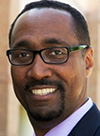
Allen Price: Don’t Let Natural Disasters Become Servicing Disasters

Allen Price is Senior Vice President of Sales and Business Development with BSI, Irving, Texas. With nearly 20 years in the mortgage finance industry, he is well-versed in both the primary and secondary mortgage markets. Prior to joining BSI Financial, he served as senior vice president with RoundPoint Financial Group, where he oversaw the company’s sales and strategy. He also served as senior vice president and national sales executive for ServiceLink’s capital markets group and as senior vice president at Nationstar Mortgage, where he led the company’s MSR and subservicing acquisitions. Earlier in his career, Price was a senior risk executive for BBVA’s residential mortgage portfolio and a senior vice president for global structured finance and RMBS trading for Bank of America.
It’s been nearly a decade since “Snowmageddon,” the three-day winter storm that dumped nearly three feet of snow and paralyzed metropolitan areas up and down the Atlantic Coast. The National Oceanic and Atmospheric Administration reported transportation was nearly halted throughout the region. And matters became worse when another snowstorm hit just three days later.
In the days and weeks after Snowmageddon, mortgage servicers and investors struggled to provide valuable information to borrowers while assessing the impact of the storm on their portfolios, as deadly conditions and power outages made it difficult, if not impossible, to reach their customers.
Since then, natural disasters have become seemingly commonplace, as every season seems to bring a major storm, flood, hurricane or wildfire somewhere in the country. These events obviously have devastating impacts on homeowners. But on one level or another, they have also revealed weaknesses among mortgage servicers and their ability to respond appropriately.
One would think this shouldn’t be the case, considering the large investments servicers have made to improve their operations following the 2008 housing crisis. Yet time and time again, many mortgage servicers have proven unable to handle the large increases in calls and emails from borrowers asking for help when Mother Nature strikes. With the right tools and partners by their side, however, servicers can—and should—do better when the next Snowmageddon hits.
For example, new mobile apps have made it infinitely easier for servicers to contact hard-to-reach borrowers after a winter storm or wildfire. These tools have proven tremendously useful at helping homeowners find out what to do during and after a disaster. Even if a borrower has lost internet access, these apps can be used to look up important phone numbers and emergency resources.
Another way more servicers and investors can help borrowers during winter storms is by providing access to their mortgage accounts from any device, in case borrowers don’t have access to their cell phones and can only get online from a hotel or public library. Social media, too, can be of enormous help to impacted borrowers, which is why more forward-thinking servicers are using these platforms to help their customers find short-term housing and other forms of relief.
Internally, emerging technologies such as AI and robotic automation can help servicers in identifying troubled borrowers and processing claims in the wake of a disaster. Following a major disaster, I have personally seen both machine learning and robotic process automation used to increase a servicer’s decision-making speed by as much as 60 percent.
New technologies are also enabling servicers to identify borrowers who have been affected by disasters, yet who have never asked for help. There are more people who end up in this situation than you might think. If a borrower misses a payment because of a major winter storm, for instance, a servicer with the right tools could identify that person by looking at the borrower’s payment activity, seeing anomalies, and reaching out to the borrower to offer help.
Servicers who find themselves without such tools can find comfort in the fact that there are specialty servicers out there that do have the them. By partnering with these providers, a servicer can greatly reduce the risk of a natural disaster on their operations.
Of course, there is no way to stop disasters from happening, and barring some miracle of science, there never will be. But complacency is not an option – in fact, it is a certain recipe for failure. Every servicer should be looking at natural disasters as an opportunity to improve and be better prepared for the next Snowmageddon – or flood, or wildfire – to hit. After all, it’s not just a matter of if it will happen, but when.
(Views expressed in this article do not necessarily reflect policy of the Mortgage Bankers Association, nor do they connote an MBA endorsement of a specific company, product or service. MBA NewsLink welcomes your submissions. Inquiries can be sent to Mike Sorohan, editor, at msorohan@mba.org; or Michael Tucker, editorial manager, at mtucker@mba.org.)
